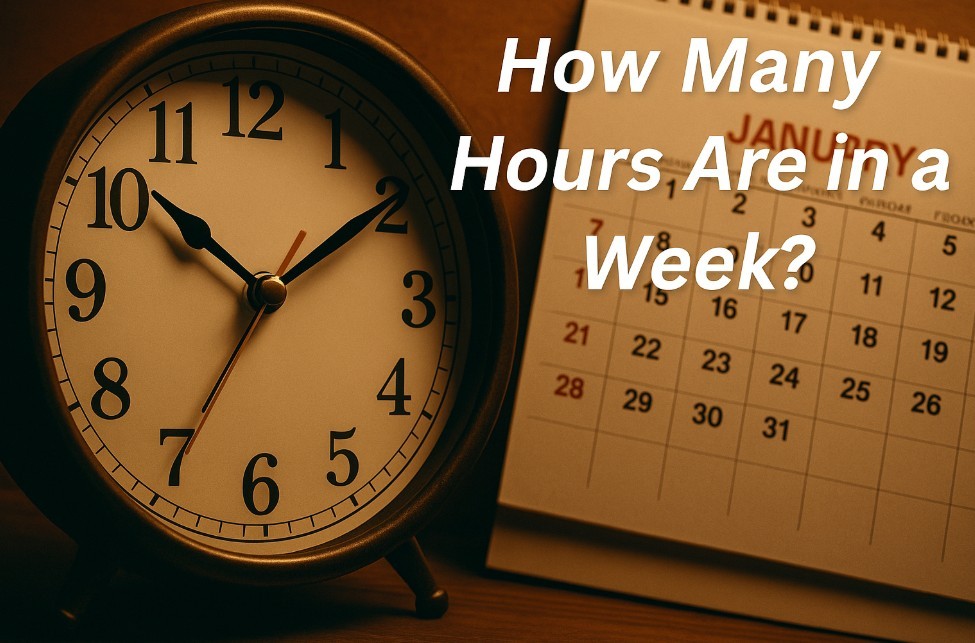How Many Hours Are in Each Month? Common Year and Leap Year Variations
 How Many Hours of Sleep Do You Need? Science-Backed Guidelines by Age Group How Many Hours of Sleep Do You Need? Science-Backed Guidelines by Age Group |
 How Many Hours Should I Study Each Day? A Science-Based Guide by Age and Goal How Many Hours Should I Study Each Day? A Science-Based Guide by Age and Goal |
 |
| How many hours are in each month of the year |
Time is the framework of our lives. We plan vacations by the month, schedule projects by the week, and measure productivity by the hour. But have you ever asked: how many hours are in each month of the year?
While a day always has 24 hours, months vary in length from 28 to 31 days. These differences can impact everything from payroll and school calendars to energy usage and data reporting.
This guide breaks down how many hours each month contains, highlights leap year adjustments, and explores how these variations affect real-world decisions, project planning, budgeting, and more.
Read more: How Many Hours Are in a Year? Common and Leap Years
Quick Summary: Hours in Each Month (Common Year)
| Month | Days | Hours |
|---|---|---|
| January | 31 | 744 |
| February | 28 | 672 |
| March | 31 | 744 |
| April | 30 | 720 |
| May | 31 | 744 |
| June | 30 | 720 |
| July | 31 | 744 |
| August | 31 | 744 |
| September | 30 | 720 |
| October | 31 | 744 |
| November | 30 | 720 |
| December | 31 | 744 |
| TOTAL | 365 | 8,760 |
Each day contributes 24 hours, so simply multiply the number of days in a month by 24 to get the total monthly hours.
February and Leap Year Variations
In leap years, which occur every four years, February has 29 days instead of 28. This adds 24 extra hours to the year:
| Month | Leap Year Days | Leap Year Hours |
| February | 29 | 696 |
This adjustment brings the total hours in a leap year to 8,784 hours.
Pro Tip: To check if a year is a leap year, it must be divisible by 4—except for century years, which must also be divisible by 400 (e.g., 2000 was a leap year; 1900 was not).
Why Monthly Hours Matter in Real Life
Understanding monthly hours helps with:
-
Payroll calculations: For hourly employees and freelancers
-
Utility billing: Energy usage (e.g., kWh/month)
-
Project timelines: Knowing work hours available per month
-
Time tracking: For students, remote workers, or contractors
-
Budgeting: Monthly subscription pricing based on usage
-
Academic scheduling: Structuring semesters, assignments, and exams
-
Healthcare staffing: Hospital shift schedules are often planned by hour
Hours in Each Quarter
For businesses and finance, months are grouped into quarters:
| Quarter | Months | Total Days | Total Hours |
| Q1 | Jan, Feb, Mar | 90 | 2,160 (or 2,184 in leap years) |
| Q2 | Apr, May, Jun | 91 | 2,184 |
| Q3 | Jul, Aug, Sep | 92 | 2,208 |
| Q4 | Oct, Nov, Dec | 92 | 2,208 |
How to Use Monthly Hour Totals Effectively
Knowing monthly hour totals isn’t just about trivia. It supports:
-
Annual Budgeting: Forecast expenses over months with varying hourly demands.
-
Performance Benchmarks: Compare goals based on number of workable hours.
-
Classroom Planning: Allocate teaching hours, testing windows, and holidays.
-
Productivity Reviews: Identify peak and low-activity periods based on month length.
Monthly Hour Conversion Guide
Need to go beyond just days and hours? Here are conversions based on a 24-hour day:
-
1 week = 168 hours
-
1 day = 24 hours
-
1 hour = 60 minutes = 3,600 seconds
Convert hours to minutes and seconds:
-
January: 744 × 60 = 44,640 minutes
-
February (common): 672 × 60 = 40,320 minutes
-
February (leap): 696 × 60 = 41,760 minutes
Time Tools: How Technology Helps Track Monthly Hours
There are many tools available today to simplify time tracking:
-
Apps: Toggl, RescueTime, Clockify, and Timely allow you to track monthly hours per task.
-
Spreadsheets: Excel or Google Sheets can calculate hours worked, tracked by day.
-
Calendars: Google Calendar or Outlook allows hour-by-hour planning with color-coded blocks.
-
Smart Planners: Devices like the TimeFlip or Pomodoro clocks help log time manually and improve productivity.
FAQs About Monthly Hours
Q: Which month has the fewest hours?
A: February with 672 hours (or 696 in leap years).
Q: Do all months have the same number of workdays?
A: No. Workdays depend on weekends and holidays, even if the total days are similar.
Q: What is the average number of hours per month?
A: Average month length = 30.44 days → 730.56 hours
Q: Why do some months have 30 and others 31 days?
A: Roman emperors altered the calendar historically—Julius Caesar and Augustus Caesar both adjusted month lengths for symbolic and political reasons.
Q: How do time zones and daylight saving impact monthly hours?
A: DST changes don’t affect total monthly hours but do shift clock time, causing some days to appear longer or shorter by 1 hour.
Q: How many work hours are in an average month?
A: Based on a 40-hour workweek, an average month has ~160 to 184 work hours.
Q: How many hours do I sleep in a month?
A: 8 hours/day × 30 days = 240 hours (more in longer months).
Conclusion: Count Time to Make Time Count
Understanding how many hours are in each month isn’t just a numbers game—it’s a productivity and planning advantage. Whether you’re organizing a semester, managing a shift-based team, balancing budgets, or tracking your own goals, precise knowledge of time unlocks better decision-making.
-
Shortest month: February (672 or 696 hours)
-
Longest months: January, March, May, July, August, October, December (744 hours)
Stay organized by planning with accurate monthly hour data. Small insights lead to big improvements.
 How Many Hours Work Legally In Canada and International Students How Many Hours Work Legally In Canada and International Students What are maximum hours allowed to work in a week and in a day in Canada today and working hours for foreign students in canada! |
 How Many Hours Work Legally In The UK and International Students? How Many Hours Work Legally In The UK and International Students? What are maximum working hours per week in the UK and working hours for international students - Working in UK While Studying! |
 How Many Hours Work Legally In New Zealand and Foreign Students How Many Hours Work Legally In New Zealand and Foreign Students How many hours a week are allowed to work in New Zealand? How many hours can international students work legally? |
























